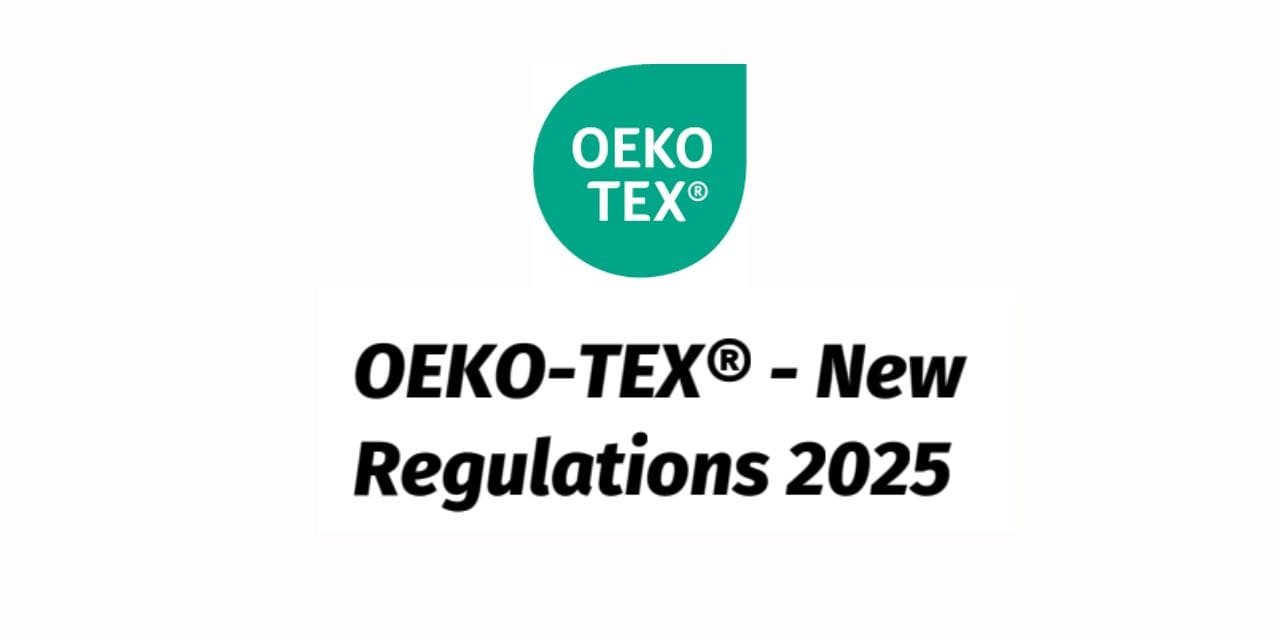OEKO-TEX®’s goal is still to promote trust in the leather and textile industries. The OEKO-TEX® Association has revised its testing criteria, limit values, and guidelines for its certifications in light of the most recent scientific research and legislative developments because confidence depends on continually high standards. Important modifications include tougher BPA restrictions under OEKO-TEX® STANDARD 100, stringent transparency standards for leather supply chains under OEKO-TEX® LEATHER STANDARD, and improved organic cotton certification through OEKO-TEX® ORGANIC COTTON, which is included in OEKO-TEX® MADE IN GREEN. Verification of biodegradability and commodity chemicals will be part of the extended OEKO-TEX® ECO PASSPORT. After the transition period, the updated standards will go into effect on April 1, 2025.
STANDARD 100: New organic cotton rule and BPA safety
The OEKO-TEX® community places a high value on openness and clear communication. Claims of “GMO-free” or “organic” cotton will no longer be included in the scope of the OEKO-TEX® STANDARD 100 certification as of April 1, 2025. With OEKO TEX® ORGANIC COTTON, cotton may now be certified as “organic.” This decision was made to improve control of certified organic cotton, an area where fraud is common, and is motivated by the commitment to upholding the highest standards of safety and compliance. The goal of OEKO-TEX® is to certify only organic cotton that is truly reliable. Cotton materials are specifically affected by this change. Wool, hemp, linen, and other organic materials are unharmed.
Following discussions with both internal and external toxicologists, OEKO-TEX® lowered the BPA maximum value from 100 to 10 mg/kg. Tests of textiles that are worn directly against the skin have frequently revealed the chemical. The WHO and endocrinologists classify BPA as an endocrine disruptor, a chemical that can alter the hormonal system if it enters the body, even in trace amounts.
LEATHER STANDARD: Ahead of Europe’s Deforestation Regulation (EUDR)
In May 2024, the European Commission approved a new rule as part of the 2030 EU Biodiversity Strategy and the European Green Deal. The European Deforestation Regulation’s (EUDR) need for leather supply chain openness is one of the biggest obstacles. To make sure that leather goods don’t contribute to deforestation, businesses need to track their origins. Originally scheduled to take effect at the end of 2024, the EUDR was delayed by one year in November 2024. To obtain OEKO-TEX® LEATHER STANDARD certification, however, hides and leather goods derived from cattle and calves must be accompanied by proof of provenance, such as delivery notes from the slaughterhouse.
MADE IN GREEN: Adding ORGANIC COTTON certification option
In addition to STANDARD 100 and LEATHER STANDARD, OEKO-TEX® ORGANIC COTTON is recognized as a product certificate by the OEKO-TEX® MADE IN GREEN mark. Supply chain traceability and verification from farm to product with responsible and safe production are two advantages of both OEKO-TEX® standards that can be combined by businesses who have their cotton products certified.
STeP: Enhanced ZDHC cooperation boosting sustainability in textiles and leather
Customers of OEKO-TEX® STeP can now take part in the ZDHC Supplier to Zero Program. By optimizing standards and solutions through collaborative efforts, ZDHC and OEKO-TEX® hope to empower the textile, garment, footwear, and leather industries to improve their environmental impact. In an effort to increase the impact, holders of OEKO-TEX® STeP certificates can now take part in the ZDHC Supplier to Zero Program. For recognition under the Supplier to Zero Program, businesses can submit their STeP certificate and report to the ZDHC Supplier Platform.
ECO PASSPORT: Expanding scope and highlighting biodegradability
Beginning in 2025, OEKO-TEX® ECO PASSPORT will include commodity and maintenance chemicals in addition to chemicals specifically designed for textile and leather applications.
Widespread production and usage of commodity chemicals at the beginning of supply chains will allow for more thorough monitoring across the leather and textile industries. This expansion intends to prioritize environmental protection, improve worker safety, and phase out hazardous compounds earlier. In order to guarantee quality, second-life commodity chemicals will also be tested more frequently.
Customers of ECO PASSPORT will be able to emphasize on their certifications how biodegradable their chemical products are. According to OEKO-TEX®, biodegradability is a crucial component of sustainable leather and textile production, and its influence increases with its early supply chain implementation. Proof of biodegradability, confirmed by an OEKO-TEX® institute or an authorized third party, is required for certified surfactants, softeners, or complexing agents. There is a one-year transition period for currently certified products in these categories to conform.
About OEKO-TEX®
For more than 30 years, OEKO-TEX® has offered standardized solutions that companies in the textile and leather industry can use to transparently and sustainably optimize their manufacturing processes. Based on scientific principles, OEKO-TEX® contributes to bringing high-quality, safe and sustainable products to
the market. 35,000 manufacturers, brands and trading companies, in more than 100 countries are currently working with OEKO-TEX®. At the same time, millions of consumers around the world use the OEKO-TEX® labels as a guide for their responsible purchasing decisions. Products and suppliers certified by OEKO-TEX® can be found in the online OEKO-TEX® buying guide
at https://www.oeko-tex.com/en/buying-guide. Follow OEKO-TEX® on Facebook, Instagram, LinkedIn and WeChat.

